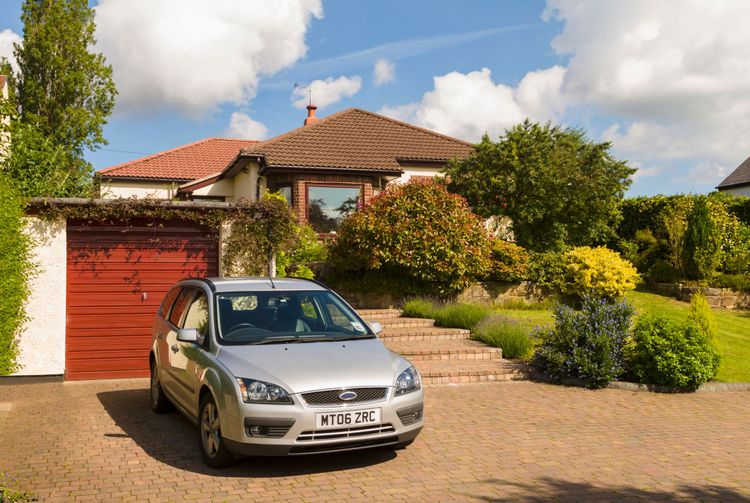Autonomous Emergency Braking (AEB) in Cars
AEB technology can help mitigate the impact of accidents by automatically applying the brakes when a potential collision is detected. By reducing the severity of accidents, AEB can save lives and improve road safety in India. Just like an AEB system helps prevent road accidents, comprehensive car insurance helps you shoulder the financial burden of being in one. With that in mind, let’s understand the autonomous emergency braking system and how it works.
AEB technology can help mitigate the impact of accidents by automatically applying the brakes when a potential collision is detected. By reducing the severity of accidents, AEB can save lives and improve road safety in India. Just like an AEB system helps prevent road accidents, comprehensive insurance for a 4-wheeler helps you shoulder the financial burden of being in one. With that in mind, let’s understand the autonomous emergency braking system and how it works.
Share this article
Protect Your Ride with the Best Car Insurance Plans
Believe it or Not! Save upto* 75% on TATA AIG Car Insurance
List of Content
- What is the Autonomous Emergency Braking System?
- Types of Automatic Emergency Braking in Cars
- Cars with AEB Systems
- Conclusion
What is the Autonomous Emergency Braking System?
Autonomous or Automatic Emergency Braking is a safety feature in cars that helps prevent collisions by automatically applying the brakes if it detects an impending collision. The automatic emergency braking system utilises sensors like cameras, radar, or lidar to detect a possible collision and alert the driver through visual and/or auditory warnings. If the driver does not respond in time, the automatic emergency brake system will hit the brakes to avoid or reduce the collision's severity.
Autonomous emergency braking can be particularly helpful when a driver may be distracted or unable to react quickly. For instance, when a pedestrian suddenly crosses the road or the car in front abruptly stops. If the collision is unavoidable, the autonomous emergency brake reduces its severity by slowing the vehicle down before impact.
The automatic emergency brake system has proven effective in reducing the number and severity of collisions. This is why many car manufacturers are now making cars with automatic emergency braking a standard feature. However, AEB is not a replacement for safe driving practices, and for wholesome protection on the road, it is essential to invest in comprehensive insurance for a four-wheeler.
Now that we understand the basics of AEB: autonomous emergency braking, let’s look at the different kinds of autonomous emergency braking systems.
Types of Automatic Emergency Braking in Cars
Different kinds of AEB systems have been curated, considering different driving scenarios. The primary objective of the automatic emergency braking system is to reduce the impact of collisions with objects, other vehicles, or pedestrians. Here are the different types of AEB systems to make a note of:
Forward Automatic Emergency Braking: This system uses sensors to detect potential collisions with objects or other vehicles in front of the car.
When the system detects a potential collision, it alerts the driver through visual and/or auditory warnings and automatically uses the brakes if there is no immediate response from the driver. This either prevents the impact altogether or at least reduces its severity.
Rear Automatic Emergency Braking: Just like the title suggests, the rear automatic emergency braking system is designed to detect potential collisions behind the car. This system is used primarily when reversing the car, and it works in conjunction with rear cross-traffic alerts to identify the movement of vehicles behind the car when reversing.
This feature can be especially helpful to help you navigate your car through a tight parking spot and is considered more a convenience feature than a safety one.
AEB with Pedestrian Detection: This system is designed to detect pedestrians, cyclists, and large animals in the vehicle's path. If any of these come in front of the car, the AEB applies breaks to slow down or stop the car in case the driver has not done this themselves. This system can also differentiate between adults and children to adjust the braking force accordingly.
City Speed AEB: This system is designed to operate in city driving conditions with relatively low speeds. It uses sensors to detect potential collisions with other vehicles, pedestrians, or objects and can apply the brakes automatically to avoid or reduce the impact of the collision.
It is particularly helpful when driving on the road with bumper-to-bumper traffic as it can prevent rear-ending a vehicle if you fail to apply the brakes in time.
Highway Speed AEB: This system is designed to operate at high speeds on highways or freeways by employing advanced sensors to detect obstacles that may be far away. It can also incorporate other features, such as adaptive cruise control, to help maintain a safe distance from the vehicle in front.
However, the highway speed AEB can only slow the car before impact and not stop it. It is, therefore, crucial for the driver to be attentive to prevent collision despite the intervention of the AEB.
Now that we understand AEB: automatic emergency braking and its types let’s look at some cars with automatic emergency braking.
Cars with AEB Systems
Here is a list of some cars that have a reliable AEB: autonomous emergency braking installed in them:
Tata Nexon
Volkswagen Polo
Mahindra XUV 700
Toyota Fortuner GXL
Kia Seltos
Hyundai Creta
Honda City
BMW 3 Series
Volvo XC90
Audi Q5
It is important to note that AEB automatic emergency braking may not be available on all variants of these cars. Depending on the model and the car's trim level, the AEB may come as an optional or standard feature. And so, before making a purchase, the buyer must confirm the availability of AEB systems with the manufacturer or the dealer.
Irrespective of your car model or the braking system, ensure that you get comprehensive insurance for your four-wheelers. Tata AIG offers a range of car insurance plans customised with add-ons for wholesome road protection. You can also calculate how much premium you would be paying using the free car insurance calculator on our website.
Conclusion
The autonomous emergency brake is an important safety feature that enhances road safety by avoiding collision or reducing its severity. However, for comprehensive protection on roads, drivers must invest in a comprehensive car insurance policy.
Comprehensive insurance for a four-wheeler acts as a financial safety net in distressing times by compensating for the losses incurred by being in an accident. Comprehensive insurance for a 4-wheeler not only pays for the damages to a third party but also reimburses damages to the insured vehicle. In addition to accidents, a comprehensive car insurance policy will secure your beloved car against theft, natural disasters, vandalism, riots, etc.
However, before investing in insurance for a 4-wheeler, individuals must carefully analyse their insurance needs and find a cover that best accommodates these requirements.
Protect Your Ride with the Best Car Insurance Plans
Believe it or Not! Save upto* 75% on TATA AIG Car Insurance
People also search for
Key Insurance term
Share this article
Latest from our blogs

Zero Depreciation Car Insurance Cover
zero depreciation / depreciation reimbursement cover reimbur...
Read More
What is Insured declared value (IDV)?
The term ‘IDV’ refers to the maximum claim your insurer will...
Read More
How is your car insurance premium calculated?
Well it’s about time that changed, don’t you think? Read on ...
Read More